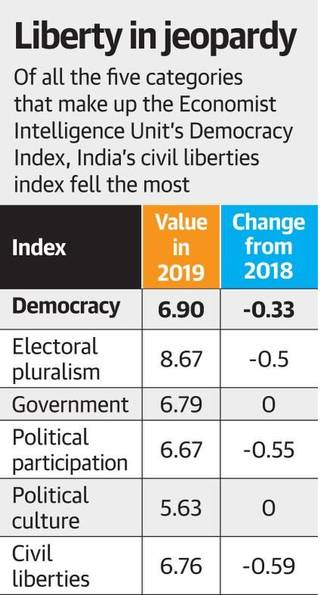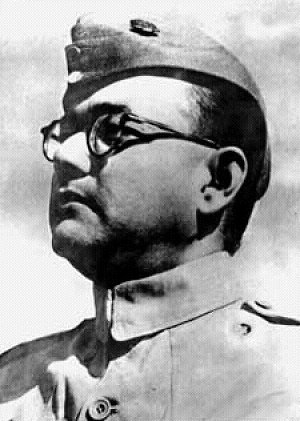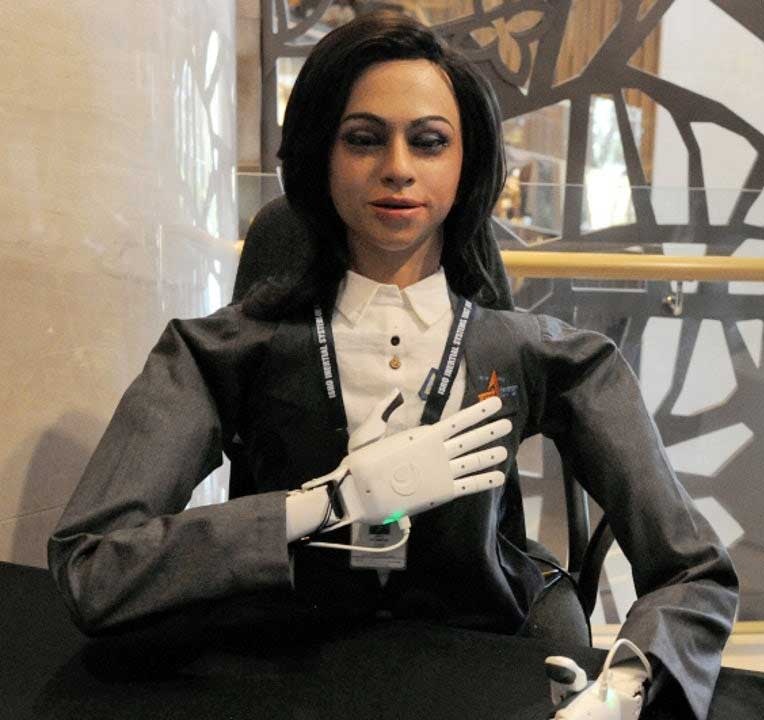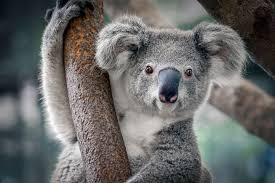Indian Polity
Democracy Index: EIU
Why in News
India has slipped 10 places in the 2019 Democracy Index to 51st position. In 2018, India was ranked at 41.
- The Democracy Index (began in 2006) which is prepared by the Economist Intelligence Unit, provides a snapshot of the state of democracy worldwide in 165 independent states and two territories.
- The Economist Intelligence Unit is the research and analysis division of The Economist Group, which is the sister company to The Economist newspaper.
Democracy Index
- Based on five categories:
- Civil liberties,
- Electoral process and pluralism;
- Functioning of government;
- Political participation; and
- Political culture.
- The countries are scored on a scale of 0 to 10 on 60 indicators within the above categories.
- Based on their scores, each country is classified as one of four types of regimes:
- Full democracy (scores greater than 8);
- Flawed democracy (greater than 6 and up to 8);
- Hybrid regime (greater than 4 and up to 6); and
- Authoritarian regime (less than or equal to 4).
- Fall in Global Score
- The average global score has fallen from 5.48 in 2018 to 5.44 in 2019. This is the worst average global score since 2006.
- Cause: Driven by sharp regressions in Latin America and Sub-Saharan Africa, four out of the five categories that make up the global average score have deteriorated.
- There are only 22 “full democracies” as compared to 54 “authoritarian regimes” and as many “flawed democracies”.
- Almost one-half (48.4%) of the world’s population live in a democracy of some sort, although only 5.7% reside in a “full democracy”, down from 8.9% in 2015 as a result of the US being demoted from a “full democracy” to a “flawed democracy” in 2016.
- The total score of some 68 countries declined from 2018, but almost as many (65) recorded an improvement.
- Thailand registered the biggest improvement in score owing to an election in March 2019, which was the first since the military coup d’état in May 2014.
- China registered the greatest decline because of discrimination against minorities, especially in Xinjiang, and digital surveillance of the population.
India’s Performance
- Fall in Score: India’s score is down from from 7.23 in 2018 to 6.90 in 2019. This is the lowest score since 2006.
- Primary Cause: Erosion of civil liberties in the country. Specified examples include:
- Stripping of Jammu and Kashmir’s special status with the repeal of Articles 370 and 35A and the various security measures that followed the bifurcation of the state including restriction of Internet access.
- The exclusion of 1.9 million people from the final National Register of Citizens (NRC) in Assam and with the majority of people excluded being Muslims.
- On the Citizenship Amendment Act, the report said that the law has enraged the large muslim population, stoked communal tensions and generated large protests in major cities.
- Flawed Democracy: India’s score of 7.23 places it in the “flawed democracy” category i.e. countries that hold free and fair elections and where basic civil liberties are respected, but have significant weaknesses in aspects of democracy, such as problems in governance, an underdeveloped political culture and low levels of political participation.
- Comparison with Other Countries: In Asia and Australasia region, India ranks eighth, even behind countries like Taiwan and Timor-Leste.
- The United States, with a score of 7.96 that is just below the benchmark for a “full democracy”, is a “flawed democracy”, in the same category as India.
- Bangladesh (5.88) is in a “flawed democracy” category.
- Pakistan, with a score of 4.25, is categorised as a “hybrid democracy”;
- China (2.26) and North Korea (bottom-ranked with 1.08) are categorised as “authoritarian regimes”; and
- Norway (top-ranked with 9.87) is counted as a “full democracy”. Following Norway at the top of the rankings are Iceland (9.58), Sweden (9.39) and New Zealand (9.26). Other “full democracies” include Germany, the United Kingdom and France.
Indian Polity
Proposal for Guidelines to Execute Death Penalty
Why in News
The Central government has filed a petition before the Supreme Court, seeking a time limit of seven days for death row convicts to file a mercy plea.
- The petition seeks appropriate modifications to the judgement passed in 2014, during the case of Shatrughan Chauhan versus the Union of India and others.
- The above judgment defined the procedure and guidelines to be adopted in cases of prisoners on death row.
- The move comes in the backdrop of various pleas filed by convicts in the Nirbhaya gang-rape case (2012) that have delayed their hanging.
Other Demands
- Imposition of a time limit to file curative and review petitions for death row convicts.
- Mandatory issuance of death warrant of a convict within seven days of the rejection of his mercy petition by the competent courts, State governments, prison authorities in the country.
- Execution of the death sentence within seven days after the issuance of death warrant of the convict irrespective of the stage of review petition/curative petition/mercy petition of his co-convicts.
Background
- There are instances where the death sentence is not executed because the co-convicts either by default or by design choose to file review or curative or mercy petition one after the other, even at a belated stage. This causes a delay in the execution of the sentence of other co-convicts whose mercy petition has already been rejected.
- The existing guidelines to execute the death penalty are more"convict-centric" rather than "victim-centric". As these guidelines do not take into account an irreparable mental trauma of the victims and their family members, the collective conscience of the nation.
- Over the years, it has been observed that convicts of heinous crimes misuse Article 21 (Right to life) to delay the judicial proceedings and in turn death sentences.
International Relations
External Intervention on Kashmir Issue
Why in News
Recently, at the World Economic Forum (WEF) summit in Davos Pakistan has reiterated the United Nations (UN) and United States(US) intervention in Kashmir issue.
Key Points
- Pakistan has demanded that UN Military Observer Group in India and Pakistan (UNMOGIP) be allowed along the Line of Control(LoC).
- Pakistan also wanted US intervention in the Kashmir issue to help de-escalate tensions with India and prevent the possibility of nuclear conflict.
- India has always rejected the third party role in its bilateral relationship with Pakistan.
UN Military Observer Group in India and Pakistan (UNMOGIP)
- It was established in January 1949.
- After the first war in Kashmir (1947-1948), India approached the United Nations Security Council (UNSC) to bring the conflict in Kashmir to the notice of Security Council members.
- In January 1948, the UNSC adopted Resolution 39, establishing the three-member United Nations Commission for India and Pakistan (UNCIP) to investigate and mediate the dispute.
- In April 1948, by its Resolution 47, the UNCIP was reconstituted as UNMOGIP.
United Nations Security Council Resolution 47
- It is concerned with the resolution of the Kashmir conflict.
- According to it, Pakistan was to withdraw its nationals who had entered the State for the purpose of fighting and to prevent future intrusions.
- The five member UNMOGIP reconstituted through this resolution urged India and Pakistan to hold a plebiscite after the restoration of law and order.
- UN Military Observer Group in India and Pakistan (UNMOGIP) was meant to supervise the Cease Fire Line (CFL) established in Jammu and Kashmir in July 1949 under the Karachi Agreement.
- UNMOGIP is funded through the UN's regular budget.
Karachi Agreement
- After the 1st Indo-Pak armed conflict in 1948,under the supervision of the UNCIP, military representatives of both Pakistan and India met in Karachi and signed the Karachi Agreement on 27 July 1949.
- It established a cease-fire line (CFL) in Kashmir.
India’s stand on Resolution 47
- India rejected the UNSC Resolution 47 and maintained that the resolution ignored the military invasion by Pakistan and placed both nations on an equal diplomatic ground was a dismissal of Pakistan’s aggression.
- The Instrument of Accession (IoA) signed by the Maharaja of Kashmir was ignored in the resolution.
Pakistan’s stand on Resolution 47
- It objected to even the minimum presence of Indian forces in Kashmir, as mandated by the resolution.
- It wanted equal representation in the state government for the dominant party in Pakistani-held Kashmir i.e the Muslim Conference.
Disagreement Over Role of UNMOGIP
- India’s stand on UNMOGIP:
- The mandate of UNMOGIP had lapsed since it related specifically to the ceasefire line under the Karachi Agreement.
- India has maintained that UNMOGIP has outlived its utility and is irrelevant after the Simla Agreement and the consequent establishment of the Line of Control (LoC).
- Pakistan’s stand: Pakistan did not accept India’s position.
- UN’s Stand: Given the disagreement between the two parties over UNMOGIP's mandate and functions, the UNMOGIP could be terminated only by a decision of the Security Council.
- Despite their differences with the provisions of Resolution 47, both India and Pakistan welcomed the UNMOGIP and agreed to work with it.
Simla Agreement
- It followed from the Bangladesh Liberation War in 1971 that led to the independence of Bangladesh.
- India and Pakistan signed it in July 1972.
- It established a Line of Control (LoC) in Kashmir which, with minor deviations, followed the same course as the ceasefire line established by the Karachi Agreement.
- India and Pakistan mutually agreed on certain principles that both sides would adhere to while managing relations with each other.
- These emphasized respect for each other’s territorial integrity and sovereignty, non-interference in each other’s internal affairs, respect for each others unity, political independence, sovereign equality, and abjuring hostile propaganda.
- The two countries resolved to solve their differences by peaceful means, through bilateral means or other means mutually agreed upon by them.
Biodiversity & Environment
Exemptions from Environmental Clearances
Why in News
The Environment Ministry has issued a notification to exempt oil and gas firms from seeking environmental clearance for on-shore and offshore drilling explorations.
- Onshore drilling refers to drilling deep holes under the earth's surface whereas offshore drilling relates to drilling underneath the seabed.
- These drilling methods are used in order to extract natural resources – usually oil and gas – from the earth.
Key Points
- Demotion of Exploratory Projects: The notification has demoted exploratory projects to the category of ‘B2’ in the process of Environment Impact Assessment (EIA).
- Category B projects are appraised at the state level and they are classified into two types.
- Category B1 projects (Mandatorily requires EIA).
- Category B2 projects (Do not require EIA).
- Category B projects are appraised at the state level and they are classified into two types.
- Exceptions : The development of an offshore or onshore drilling site as a hydrocarbon block will continue to be classified as a “category A”.
- Decentralisation: The exemption is part of a process of ‘decentralisation’ by the Centre as it seeks to delegate more regulatory actions to State and local units.
Background
- Previously, exploratory surveys required the highest level of environmental scrutiny and were classified under category ‘A’ projects.
- The category ‘A’ project needs to prepare an EIA plan and is scrutinised by a Centrally constituted committee of experts.
- The project would also be subject to a public hearing involving the locals of the proposed project site.
- Though, Public hearings, for category ‘A’ projects, are generally exempted if they are offshore projects
Environmental Concerns
- The exploratory drilling process is an ecologically-intensive exercise that involves digging multiple wells and conducting seismic surveys offshore. Thus exemptions may cause loss of biodiversity.
- The offshore drilling operations can possibly affect fish, lead to a build-up of heavy water contaminants, disorient whales and sea life.
- The risk of oil spills threatens the coastal as well as terrestrial ecosystems.
Indian History
Netaji Subhash Chandra Bose Jayanti
Why in News
- The Prime Minister has paid tributes to Netaji Subhash Chandra Bose on his 123rd birth anniversary.
- Subhas Chandra Bose was born on 23rd January 1897, in Cuttack, Orissa Division, Bengal Province, to Prabhavati Dutt Bose and Janakinath Bose.
Subhash Chandra Bose
- Netaji Subhas Chandra Bose (23 January 1897 – 18 August 1945) is one of the most celebrated freedom fighters of India.
- In 1942, he earned the title ‘Netaji’, in Germany by the Indian soldiers of the Azad Hind Fauj.
- Bose is credited with the very famous slogan, “Give me blood, and I shall give you freedom!” as well as “Jai Hind”.
- He is also credited to be the first man to call Mahatma Gandhi “Father of the Nation”, in his address from Singapore.
Timeline
- In 1919, Bose headed to London to give the Indian Civil Services (ICS) examination and he was selected. Bose, however, resigned from Civil Services as he believed he could not side with the British.
- In 1921, Bose worked under Chittaranjan Das, a powerful politician in Bengal. He worked as the editor for Das’s newspaper, Forward, and later started his own newspaper, Swaraj.
- In 1923, Bose was elected the President of the All India Youth Congress and also the Secretary of Bengal State Congress.
- During the mid-1930s Bose travelled in Europe. He researched and wrote the first part of his book, The Indian Struggle, which covered the country’s independence movement in the years 1920–1934.
- After his return, Bose took over as the elected President of Indian National Congress in 1938 (Haripur) and stood for unqualified Swaraj (self-governance) and the use of force against the British which then combated against Mahatma Gandhi and his views.
- Bose was re-elected in 1939 (Tripuri) but soon resigned from the presidency and formed the All India Forward Bloc, a faction within the Congress which aimed at consolidating the political left.
- In 1943, he travelled to Japan and took leadership of the Indian Independence Movement in East Asia. With Japanese aid and influence, he took the leadership of a trained army of about 40,000 troops in Japanese-occupied Southeast Asia known as the Indian National Army.
- The INA was first formed under Mohan Singh and Japanese Major Iwaichi Fujiwara and comprised Indian prisoners of war of the British-Indian Army captured by Japan in the Malayan (present-day Malaysia) campaign and at Singapore.
- The troops of the INA were under the aegis of a provisional government, the Azad Hind Government, which came to produce its own currency, postage stamps, court and civil code, and was recognised by nine Axis states.
- In 1945, the British Indian Army retaliated to the capture of Manipur, Kohima and Imphal by INA and killed almost half of the Japanese forces and the entire participating INA contingent.
- Bose escaped to Manchuria seeking a future in the Soviet Union.
- He is said to have died in 1945 when his plane crashed in Taiwan. However, there are still many conspiracy theories regarding his death.
Important Facts For Prelims
Hydrochlorofluorocarbon (HCFC)-141 b
Why in News
India has successfully phased out Hydrochlorofluorocarbon (HCFC)-141 b.
- The Ministry of Environment, Forest and Climate Change (MoEFCC) notified that the issuance of import license for HCFC-141b is prohibited from 1st January 2020 under Ozone Depleting Substances (Regulation and Control) Amendment Rules, 2019.
- Ozone Depleting Substances (Regulation and Control) Amendment Rules, 2019 have been issued under the Environment (Protection) Act, 1986.
- This step is among the first at this scale in Article 5 (special status of developing countries) parties under the Montreal Protocol.
Key Points
- HCFC-141 b is one of the most powerful ozone-depleting chemicals after Chlorofluorocarbons (CFCs).
- It is mainly used as a blowing agent in the foam manufacturing industries.
- In India, the foam manufacturing sector is a mix of large, medium and small enterprises having varying capacities, with the preponderance of Micro, Small, and Medium Enterprises (MSMEs).
- HCFC-141 b is not produced domestically and all requirements were met through imports.
- India is one of the few countries that are pioneer in the use of non-Ozone Depleting technologies and have a low Global Warming Potential (GWP).
- The Ministry also adopted a structured approach to engage with foam manufacturing enterprises for providing technical and financial assistance in order to transition to non-ODS and low GWP technologies under the HCFC Phase-out Management Plan (HPMP).
Important Facts For Prelims
Vyom Mitra: Lady Robot for Gaganyaan
Why in News
Recently, Indian Space Research Organisation (ISRO) unveiled its first ‘woman’ astronaut, named Vyom Mitra who will ride to space in the first test flight of the human space mission, Gaganyaan.
Key Points
- She is half-humanoid and her body stops at the torso and has no legs. She is capable of switching panel operations, performing Environment Control and Life Support Systems (ECLSS) functions, conversations with the astronauts, recognising them and solving their queries.
- The humanoid can detect and give out warnings if the environment changes within the cabin.
- She will simulate the human functions required for space before real astronauts take off before August 2022. She will be sent in a space capsule around the end of 2020 or early 2021 to study how astronauts respond to living outside earth in controlled zero-gravity conditions.
- The humanoid has been developed by the ISRO Inertial Systems Unit, Thiruvananthapuram.
Important Facts For Prelims
Koala: Bushfires in Australia
Why in News
Australia is in the grips of a nationwide bushfire emergency which has severely affected wildlife.
- It’s been estimated that 1.25 billion native animals have perished in the Australian bushfires, including koalas, kangaroos, wallabies, wombats, echidnas and more.
- Koalas are among the first animals to perish in wildfires because the slow-moving creatures can’t outrun the flames.
Key Points
- Koala is (Phascolarctos cinereus) an arboreal (lives in trees) marsupial.
- Marsupial: A marsupial is born in a very incomplete state. They are minute, hairless and with hind limbs only partially formed. Around 2/3rd of them live in Australia. The other third live mostly in South America.
- Instead of the placenta, the mother’s milk nourishes the young and allows it to grow and develop.
- Although the word ‘marsupial’ comes from the Latin word ‘marsupium’, which means ‘pouch’, not all marsupials have pouches.
- They are endemic to Australia.
- Due to the low nutrient levels of the Eucalyptus leaves they feed on, the koala can sleep up to 18 hours each day.
- IUCN status: Vulnerable
- Threats: Habitat destruction, climate change & severe weather (Droughts, extreme temperatures).




